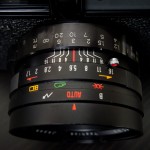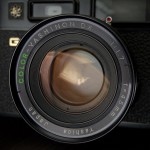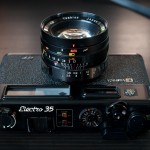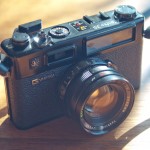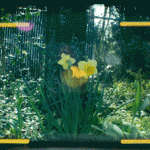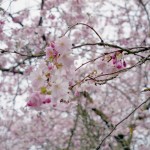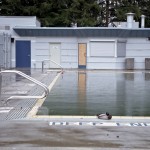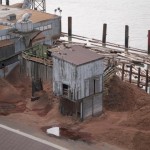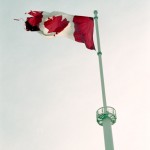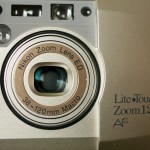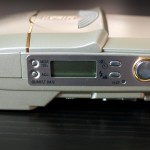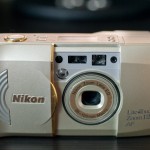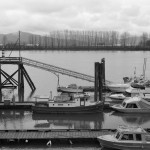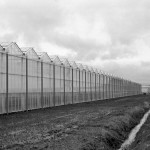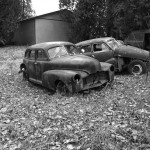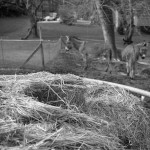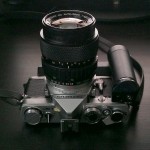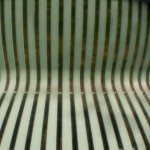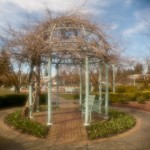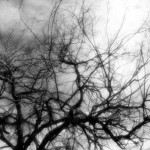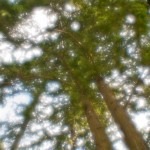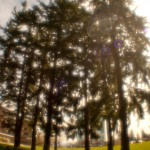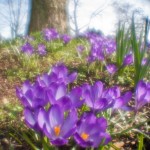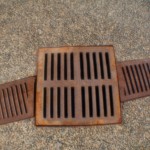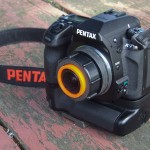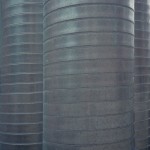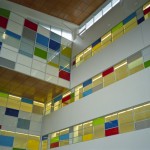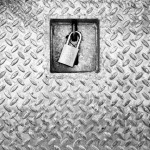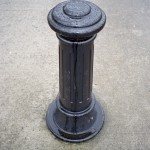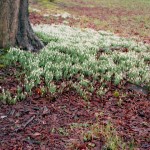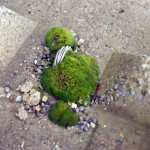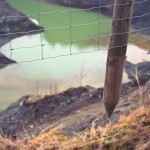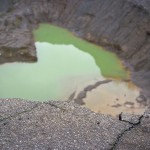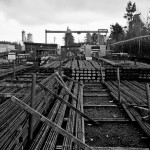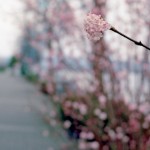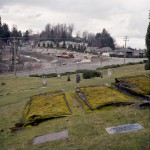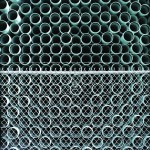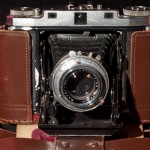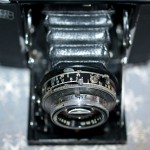May
7
2012

I’ve posted previously about creating infrared images with the Sony DSC-V3 but never shown the actual contrivance that I use to do it. In an ideal world I wouldn’t need all the step rings but I’ve tried to use only what I have available to me and as the infrared filter is the most expensive item everything else must revolve around that, literally.
Starting at the camera side is what would appear to be an extraneous item a 48mm extension ring however what this does is, through having less threads than the extension tube, over ride the cameras sensor for detecting the extension tube. This allows you a limited amount of zoom which would other wise be locked at its maximum. The next thing is the extension tube itself which places the rest of the filters out of the way of the cameras lens. Ignoring the step rings the next important item is the Rodenstock RG715 filter. Within its name is a clue to its function, the 715 refers to the wavelength of light that it allows through. The RG715 blocks light bellow 715nm and passes the near infrared above this. As visible light is defined as between 390 and 750nm you can see that most of the light we see with our eyes is blocked. After the IR filter I use neutral density filters to cut down the total amount of light coming in. When the camera is in “Night Shot” mode in daylight the sensor is overwhelmed and the image is completely washed out. This happens because the camera locks out all user adjustment in this mode forcing the shutter speed to 1/30sec and bellow.

And of course the camera itself needs to be set to Night Shot mode. What happens in this case is the camera flips it’s small internal infrared filter out of the way allowing those higher wavelengths of light to fall on the sensor. Normally this extra light would be unwanted and be detrimental to the image but this is the light I am after. The results are mixed, yes you get a near infrared image but the overall image quality is lower than the camera can produce in normal operation and without being able to control the exposure that too can be hit and miss. I’m not aware of any current cameras that have provisions for IR photography without actually modifying the camera but a modified DSLR would give better results for sure.

no comments | tags: camera, Digital, IR, Sony | posted in Cameras, Photography, Processing
Apr
22
2012
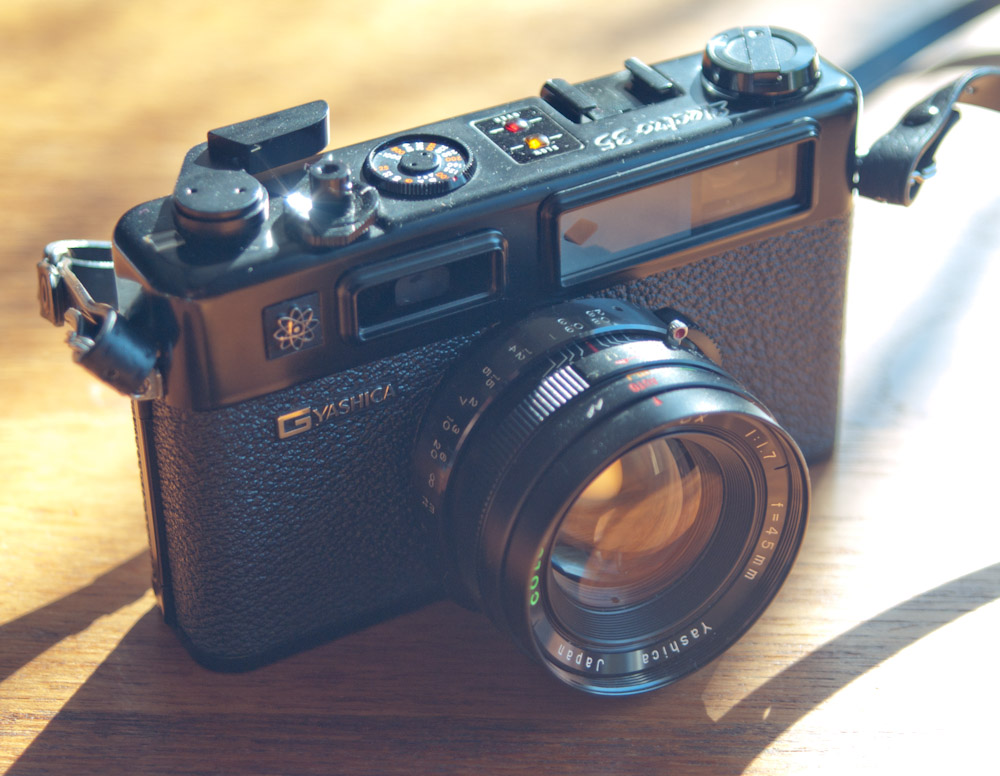
I’ve owned several Yashica Electro 35 models but I’ve pared them down leaving me with the Electro 35 GT and GX. The GT stands out in the Electro line with it’s all black body. It is a great looking camera as well as performing. The lens of the 35 GT is a 45mm f1.7 stated to be 6 elements in 4 groups. It’s strictly aperture priority with no shutter speed indication beyond the slow speed or over exposure warning arrows. The shutter speed is determined electronically during the exposure rather than being predetermined. In practice this means that during longer exposures the camera reacts to changing light conditions, extending or shortening the exposure time.
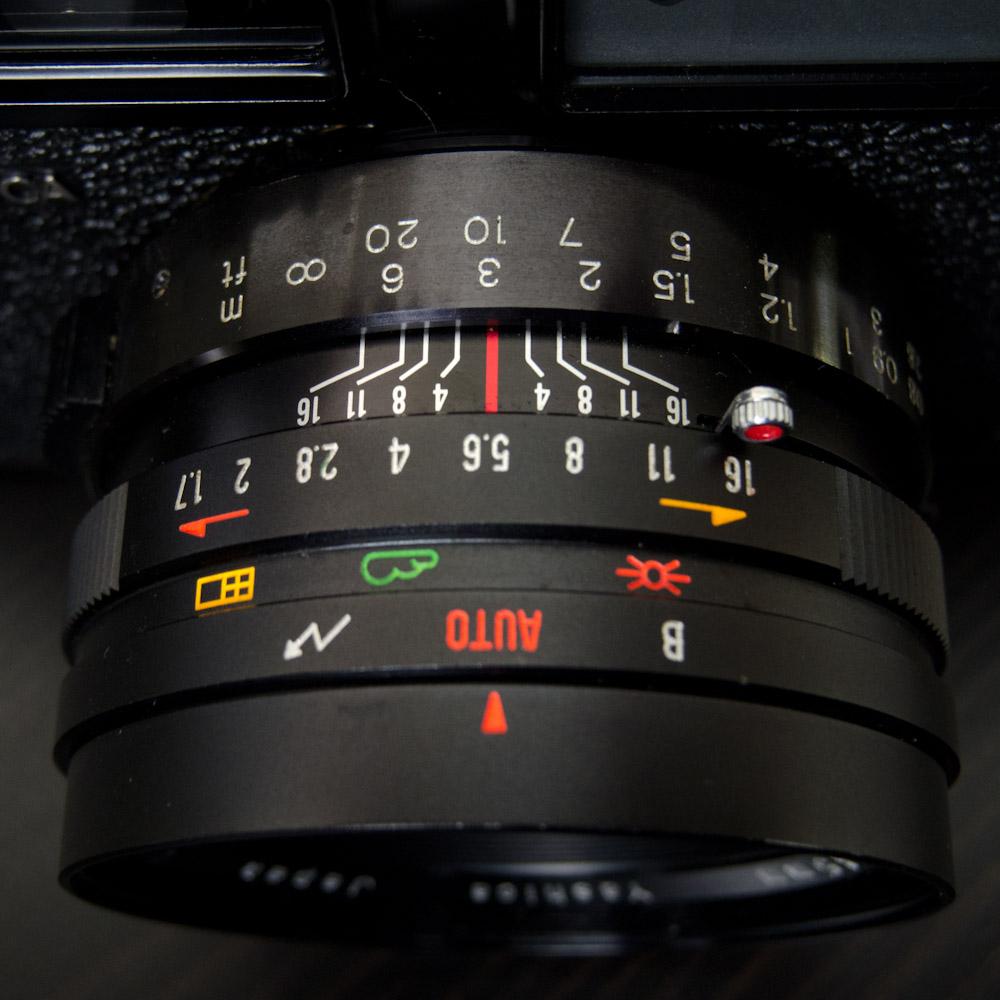
Originally when the camera was released in 1969 batteries containing mercury were prevalent with there characteristic of maintaining a constant voltage throughout there discharge life. Now mercury batteries are unavailable so an alternative is required. My solution was to use a 6V alkaline battery with a home made adapter of a similar size to the original TR164 battery. This difference in voltage is likely to cause some variability in the exposure but as I shoot colour negative film with a large latitude and the fact that I scan all my film rather than printing optically I don’t really see it.
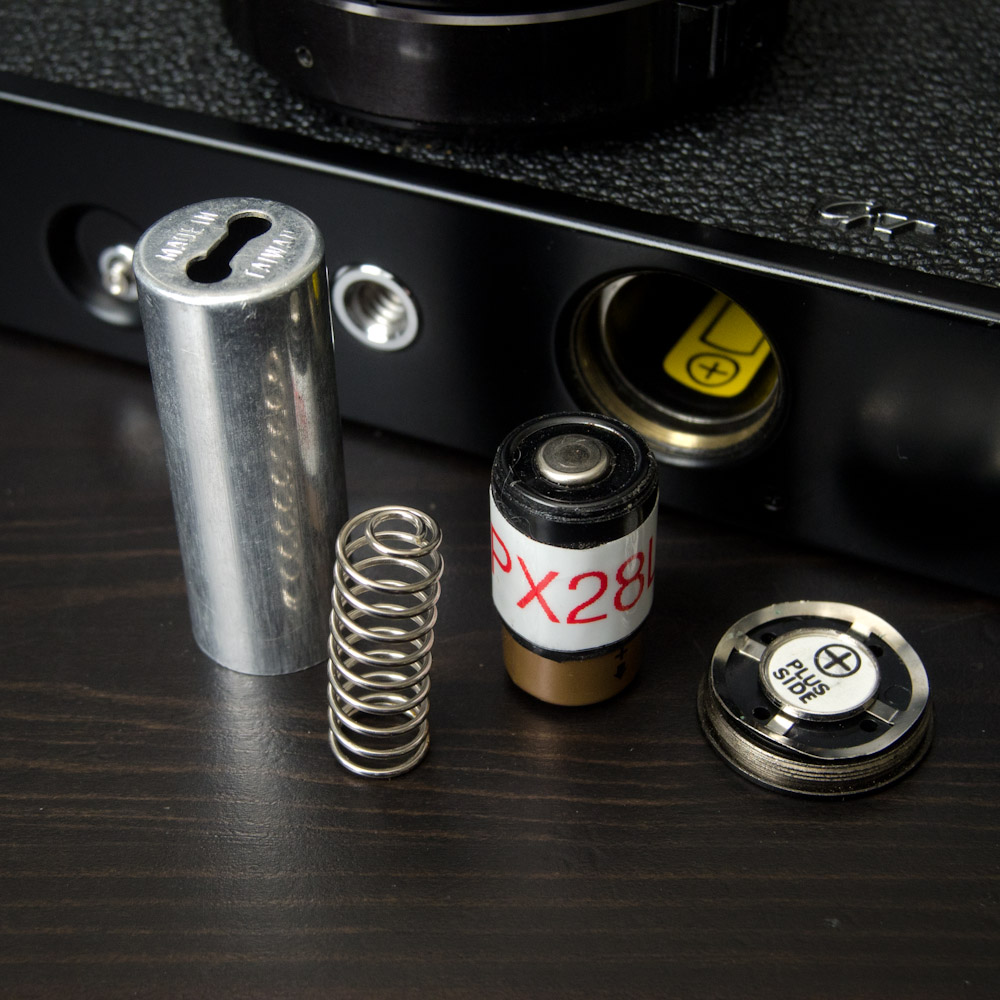
Being a rangefinder the camera has a small diamond shaped focus patch. A rangefinder works by linking the focus of the lens to the position of the patch relative to the main viewfinder, so as you change the focus of the lens the rangefinder patch moves horizontally. When the item in the main viewfinder and the patch are horizontally aligned the lens is focused to that distance. This works well with views that have vertical elements but can be difficult with small repeating patterns or horizontal lines. A field of flowers can be a difficult thing to focus within because of all the similar elements. Here is an animated view through my Yashica Electro 35 GT however because you are able to actually place your eye closer there is a lot more area around the frame lines that would be visible. You can also see the built in parallax correction as the frame-lines move down to compensate for closer focusing.
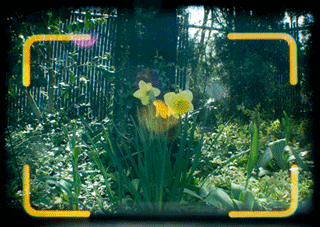
2 comments | tags: camera, film, Yashica | posted in Cameras, Photography
Apr
15
2012
Great naming Nikon very descriptive you should have thrown in AS for the apherical elements though that would have really capped it off and then you could have saved on paper by not even writing the specifications. Except I have no idea what Lite Touch means in this context, and I’m frankly afraid to Google it. You can also tell this is a good camera by the gold coloured trim (sarcasm).
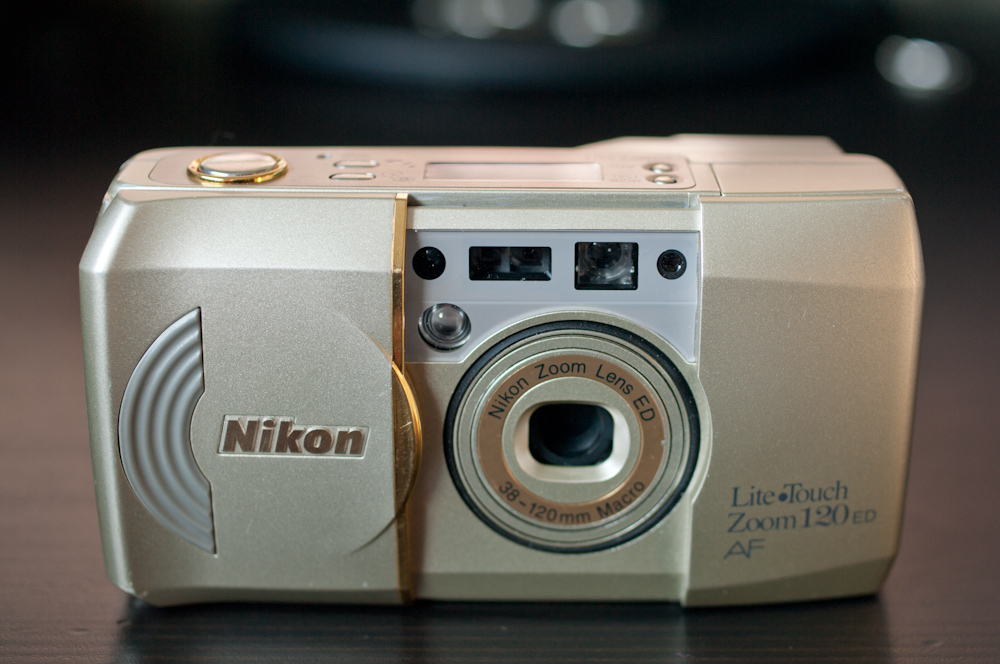
So the lens as described has ED, (no not difficulty extending) extra low dispersion glass elements and also aspherical molded glass elements, but what this really means beyond the marketing is that the lens will tend to have better correction for distortions. And I think the results bear this out, I was quite pleased with the quality of the images from this camera and its several useful controls, I particularly like the infinity focus setting. Of course the lens may provide decent image quality but some of that may also be the conservative nature of it’s range. 38-120mm is neither that wide nor that long and the maximum aperatures of 5.3 to 10.5 aren’t just not fast but are slow (yes I know I could have written that clearer but Nikon could have made the lens faster and then I wouldn’t have had too).
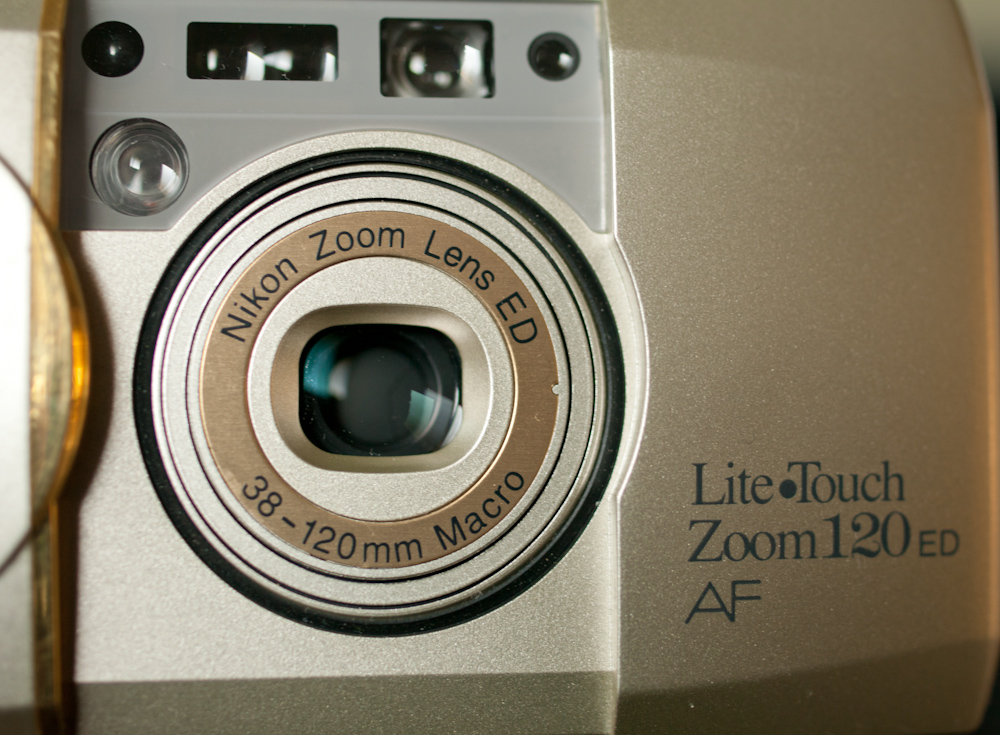
Three later models took the zoom out to 130,140 and 150 mm before Nikon stopped developing new point and shoot 35mm film cameras around 2002.
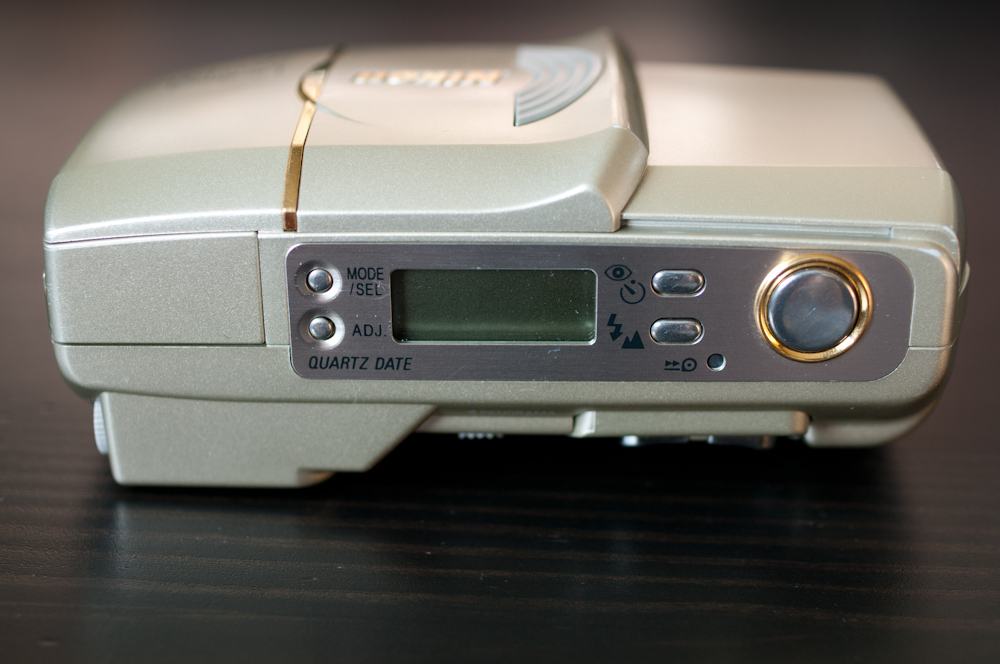
One final point, don’t you miss the ability to irrevocably imprint the date on your images, I know I do. This is the true embedded data forget EXIF.
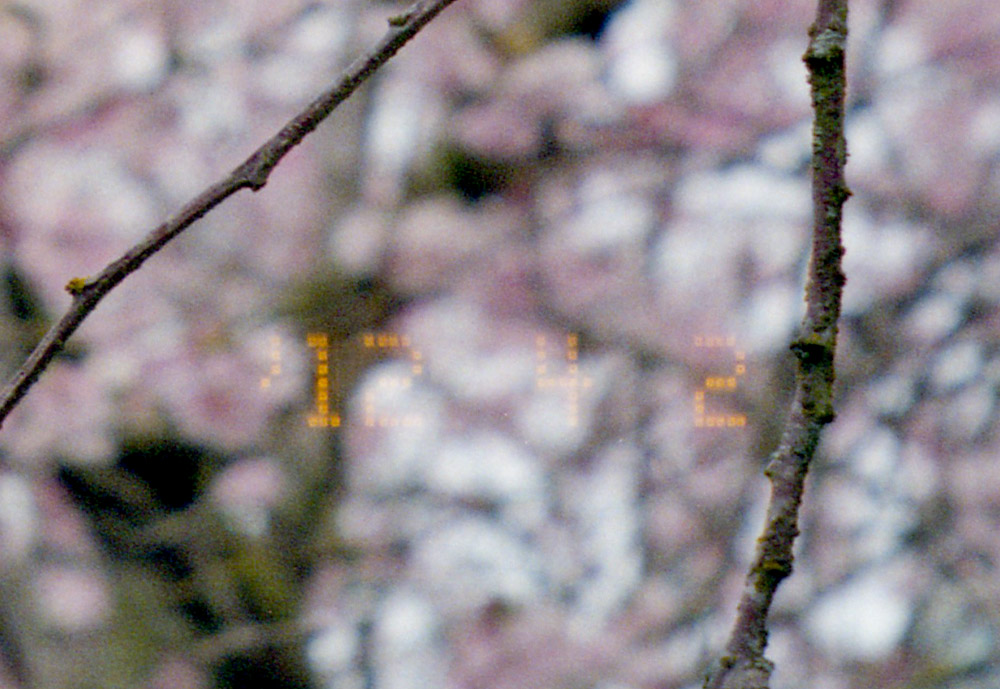
no comments | tags: camera, film, Nikon | posted in Cameras, Photography
Apr
11
2012
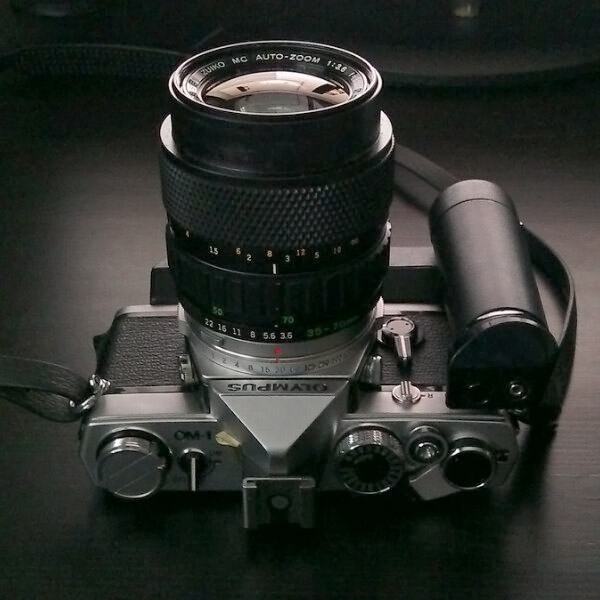
There is plenty of good information about the Olympus OM-1 and the other cameras in this series on the Internet so I don’t feel that I need to cover that ground. I will however take a moment to discus the metering and how it is measured and presented to the user.
The OM-1 has TTL metering (Through the lens) that is provided by two Cds cells placed internally around the eyepiece. A certain portion of the light passing through the viewfinder prism falls on these cells causing their internal resistance to drop. This effects the circuit causing the meter needle to move. Other parts of this circuit are the ASA dial, on off switch and of course the shutter speed and aperture linkage. All these variables contribute to the position of the meter needle. This meter requires batteries to operate but the camera it self is entirely mechanical allowing you to shoot without the meter.
The meter itself is located on the left hand side of the viewfinder and gives an indication of proper exposure for an average scene. As you make changes to the aperture and shutter the needle moves correspondingly. As the lens remains at it’s maximum aperature prior to actually taking a picture these changes are transferred from the lens to the camera via a mechanical linkage. In addition to centering the needle you can determine +-1 EV of adjustment in half stops by comparing the needle to the markings in the viewfinder. I’ve created this animation to show these.
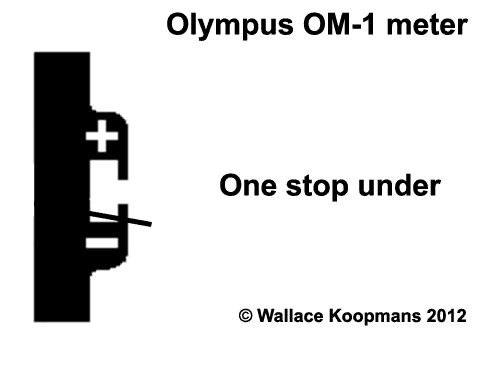
My camera has an interesting focus screen that does not have the standard central focus micro-prisms or split image but is essentially a matte screen with a finer circular matte at the center and frame lines that are well within the image. I believe this was the all matte type that someone has customized with frame lines for either astrophotography or as Ted Samzadeh of Omnilargess has suggested for medical imaging. In any case the fine matte screen provides an exceptionally clear and unobstructed view.
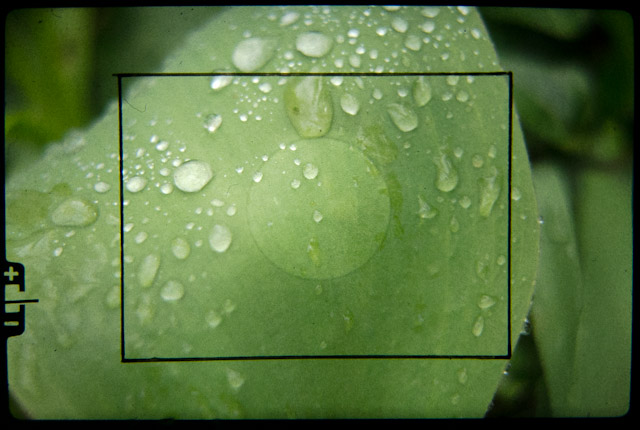
Here are some of my ubiquitous sample images from my OM-1 taken with the Zuiko 35-70 F3.6 or the 28mm F 3.5 Zuiko as these are the only two lenses I currently own. Duncan Turner of DLT Photographic has now lent me a Vivitar 55mm macro in OM mount so that should be an interesting lens to try out with this camera.
3 comments | tags: camera, film, Meter, olympus, OM1, viewfinder | posted in Cameras, Photography
Mar
26
2012
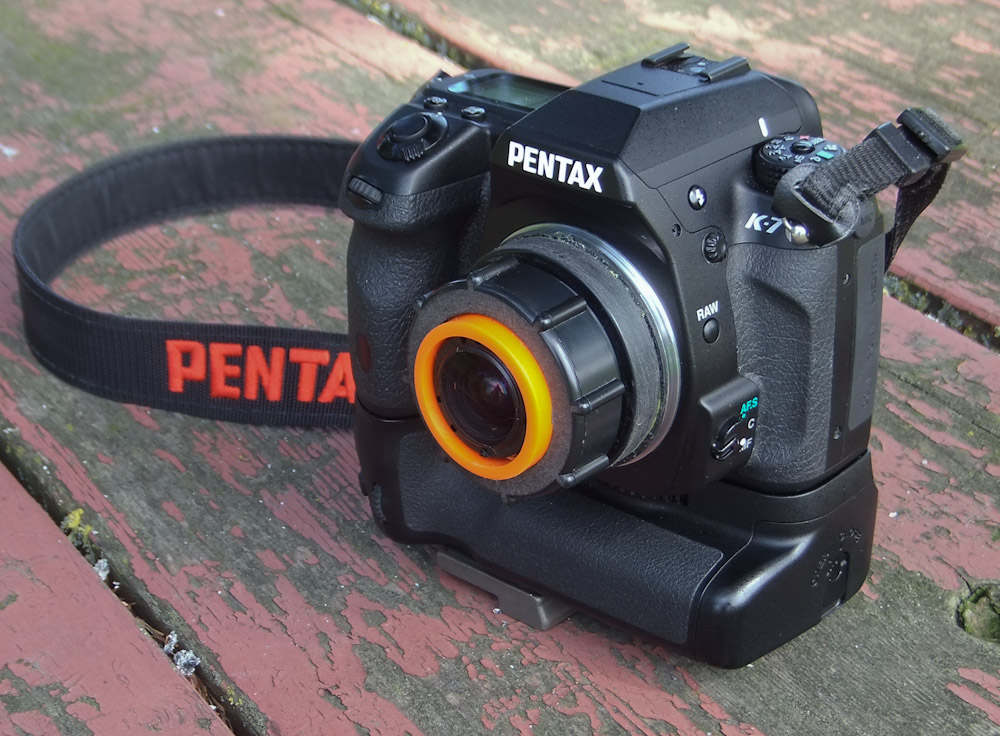
So after creating the worlds thinnest pancake lens I thought I would try my hand at making a wide-angle lens. The first thing I should mention is that the image quality is on par with the cost and I think I spent about $5 total making this lens. This is possible because a certain percentage of the cameras that I acquire are dysfunctional so they end up being disassembled for their bits. It’s those bits that I use to make other things such as this lens. I did need to buy a $2.69 piece of ABC plumbing in order to make the body of the lens.
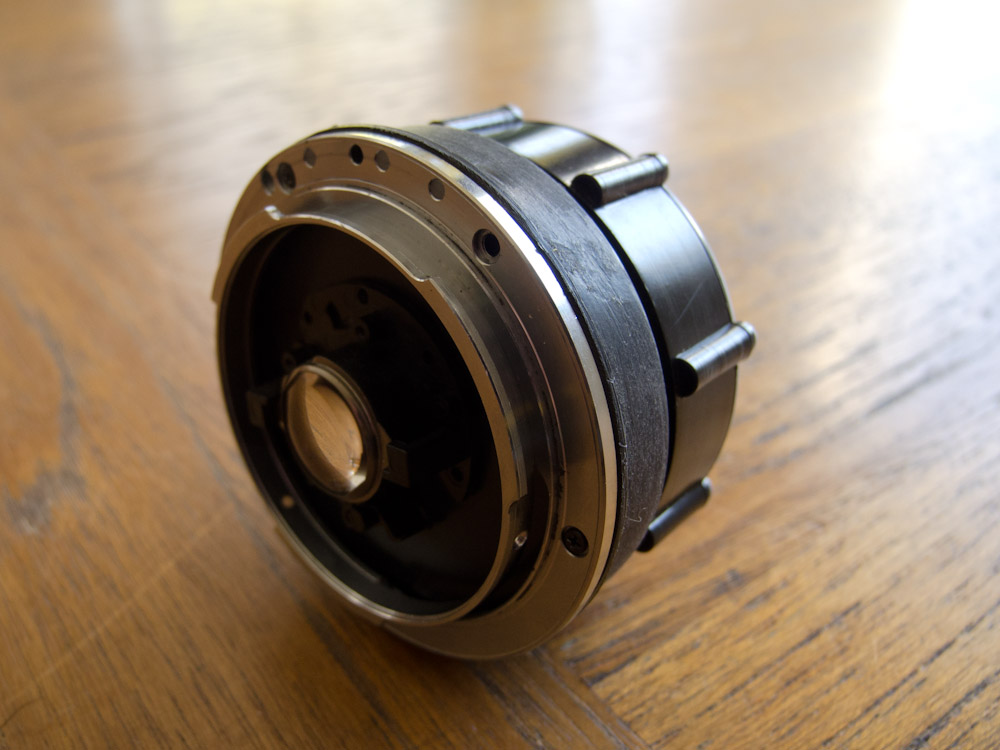
While I don’t know exactly where these lens elements came from, they are essentially the rear elements from two point and shoot cameras, one of them turned around to become the front group. Realistically your not going to be able to deal with most of the distortion when you do something like this so why fight it. This is the look of this lens take it or leave it. It turns out to be about a 15mm lens with horific yet wonderful barrel distortion. I haven’t determined the angle of view yet or the aperture which is always wide open in this version. Everything is rendered in a semi focused state no matter how near or far. Maybe there will be a Mark II version that performs a little better or maybe not as this is my digital Holga.
3 comments | tags: camera, DIY, lens, Pentax, wideangle | posted in Cameras, Photography
Mar
21
2012
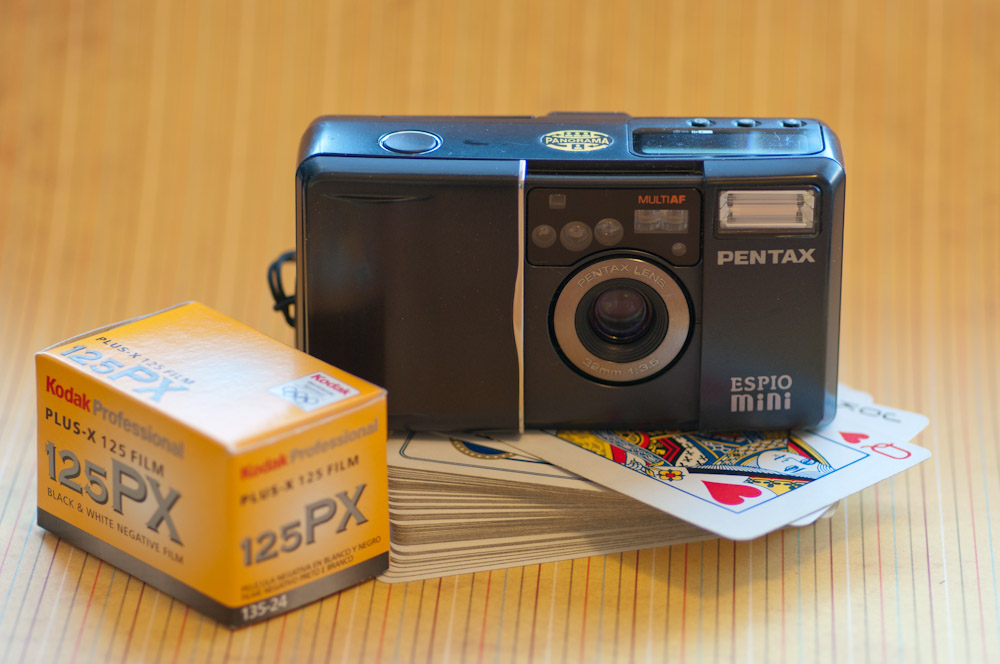
Oh no, my Pentax Espio Mini has developed a problem. The rewind motor is no longer rewinding the film all the way back after all the frames are exposed. The result is that I opened the back after the rewind only to find that the film was still there. I closed it quickly to limit the damage and then manually rewound the film in a dark bag (my backpack). So I think I lost about 4 frames near the beginning of the roll but more worrisom to me is the loss of my camera. I really like this little point and shoot and will have to begin a search for a replacement.
So what is so appealing about this camera? Well it’s extremely small, it has a fantastic 32mm f3.5 lens with three elements and has an accurate exposure system. The focus on this camera is very accurate with parallax correction in the viewfinder that allows framing when as close as the 12 inch minimum. I like that extra bit of view the 32mm gives over other cameras like the Olympus Stylus Epic /Konica Big Mini/Leica Mini or Yashica T3 with their 35mm lenses. And aside from the Olympus it is the smallest of the bunch.
And now for the images. These are from the previously mentioned light struck roll.
1 comment | tags: camera, film, Pentax | posted in Cameras, Photography
Mar
16
2012
I didn’t want to crowd the previous post about the Minolta V2 with a lot of images so I’m presenting them here separately. If you want to see the camera itself here is the first part Minolta V2 Part 1
The lens of the Minolta V2 has a focal length of 45mm which matches up nicely with the 42mm diagonal of the image formed on the film. It has a maximum aperture of F2.0 created from what I understand to be 6 elements with the shutter sandwiched somewhere in the middle. The aperture is formed via 8 blades and while they form an octagon it is nicely symmetrical. It creates a nice soft bokeh that isn’t at all busy.
Looking over the camera again I have to marvel at the design, there are so many edges and elements that exude quality and work together to create the whole. This camera even looks good from the side. I definetly need to use this camera more often and maybe try some portraits with it.
Here is a 100% crop from one of the images. This shows that stopped down from about f4 this lens is an excellent performer but with quite low contrast. Wide open it does have some distortion but it is part of it’s look.
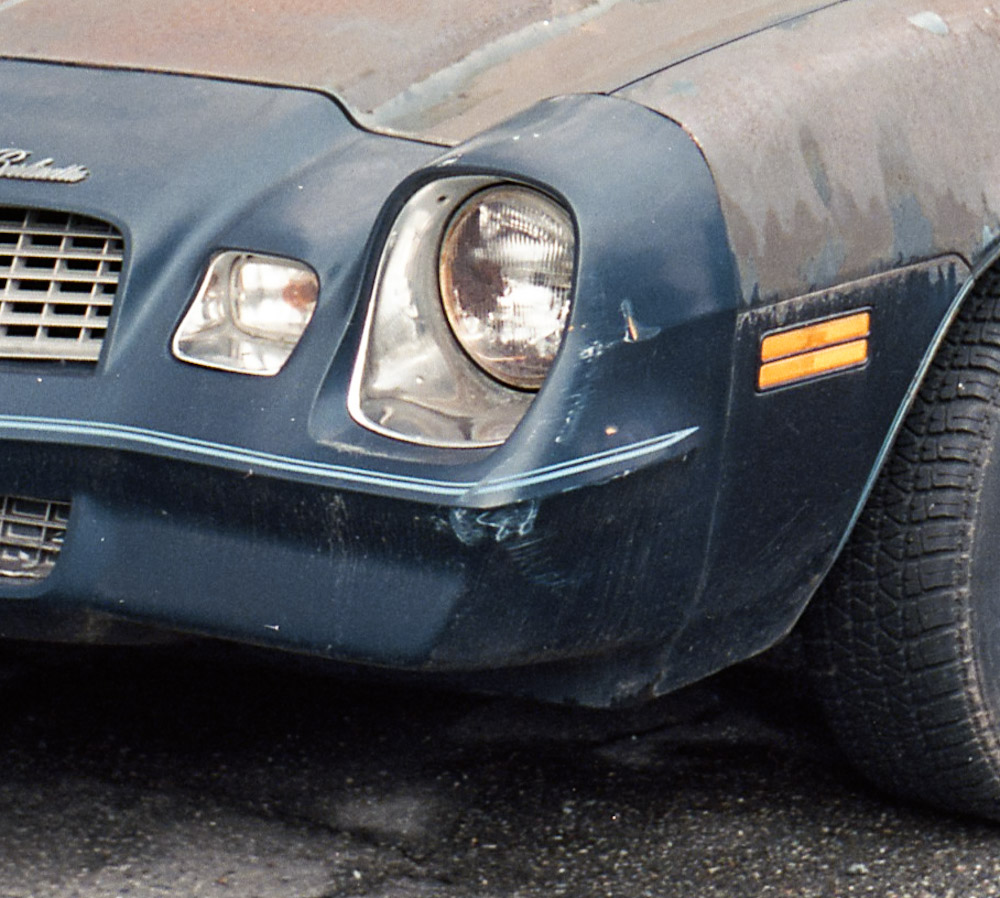
no comments | tags: camera, film, Minolta | posted in Cameras, Photography
Mar
14
2012
This is one of my all time favorite cameras, it has that certain look that defines the fixed lens rangefinder form.
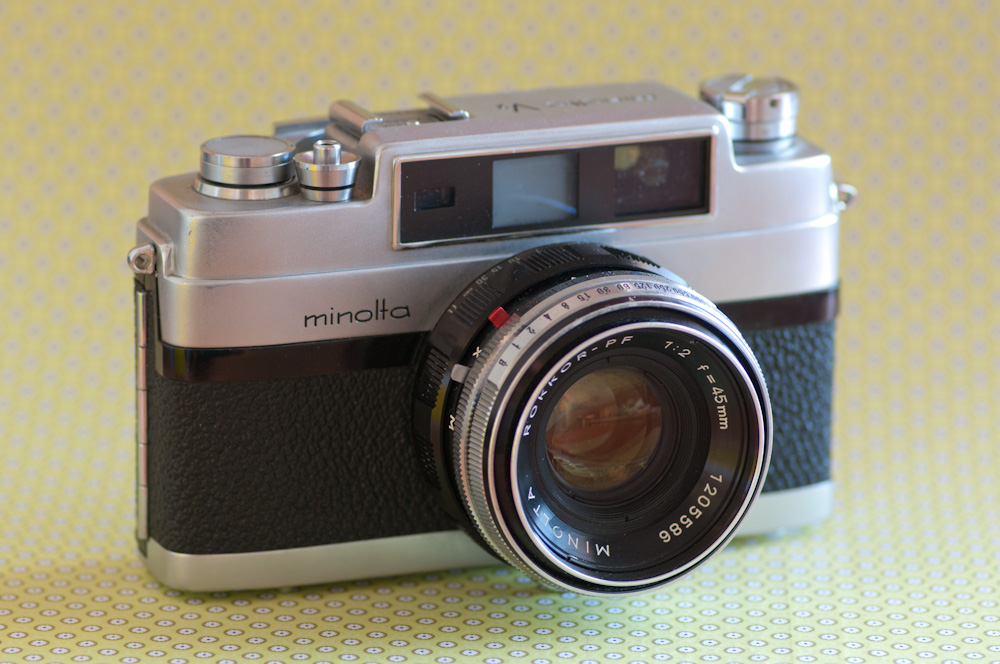
Every aspect of this camera is nicely done right down to the black band on the shutter release and film rewind that match the film advance leaver.
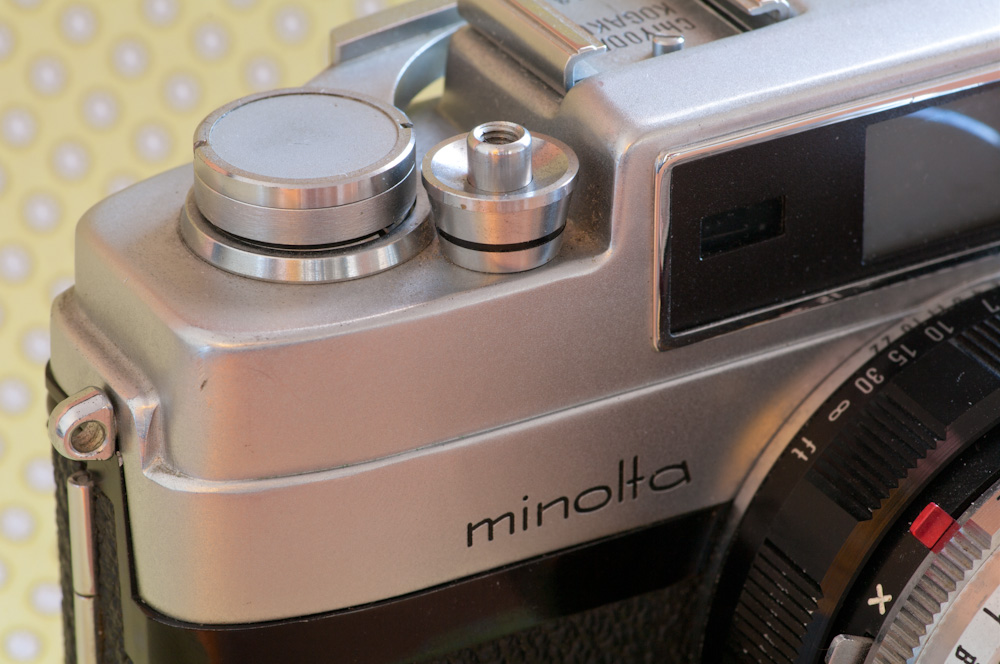
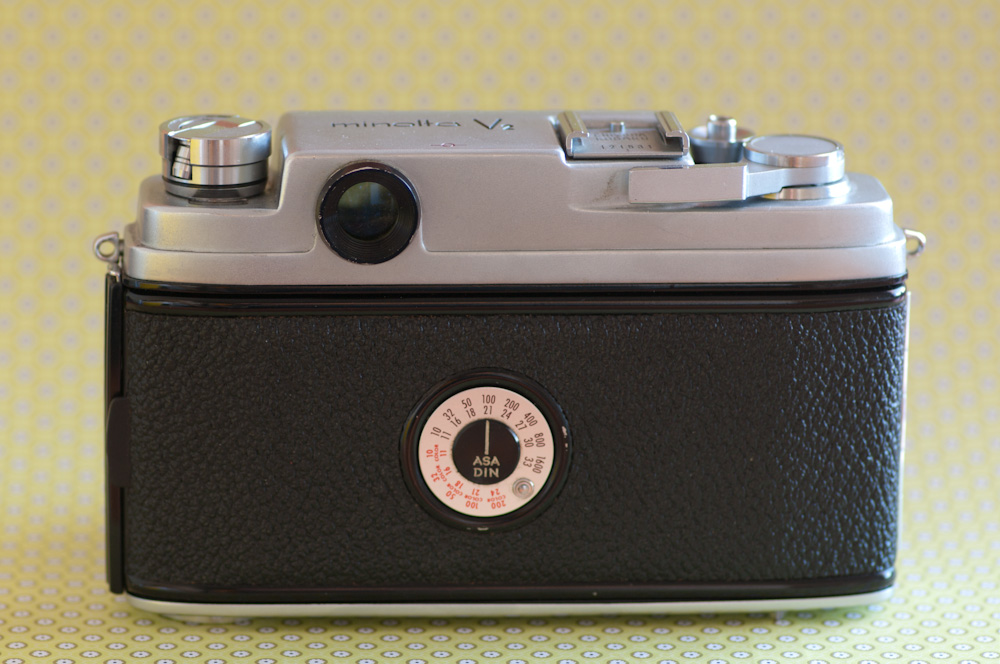
The defining technical detail of this camera must be it’s shutter which is capable of 1/2000 of a second. This was quite an achievement in 1958 with a leaf shutter. To reach this speed though the aperture is limited to maximum opening of f8. Both shutter and aperture control are on the lens with a small window providing the EV number for that combination. The same EV can be maintained will changing shutter and aperture by turning both dials together.
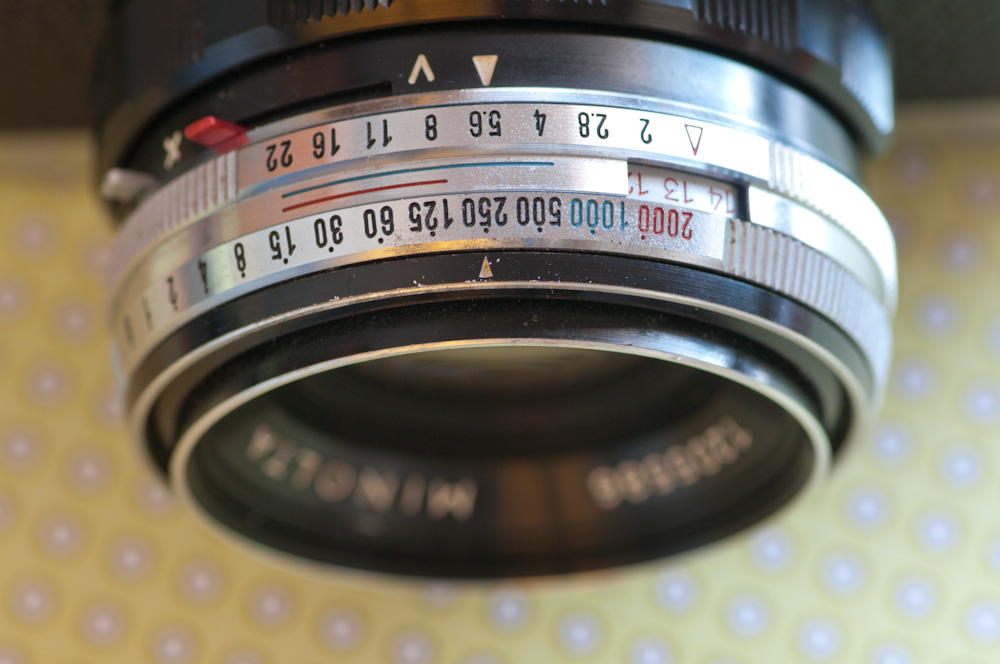
The viewfinder framelines automatically adjust for close focusing and the focus patch is a nice contrasty rectangle. Unfortunately my viewfinder frame is slightly askew which results in crooked horizons if you adhere to it as i did with my last roll of film.

In the second part I’ll show some sample images and discuss the camera some more.
2 comments | tags: camera, film, Minolta | posted in Cameras, Photography
Mar
8
2012
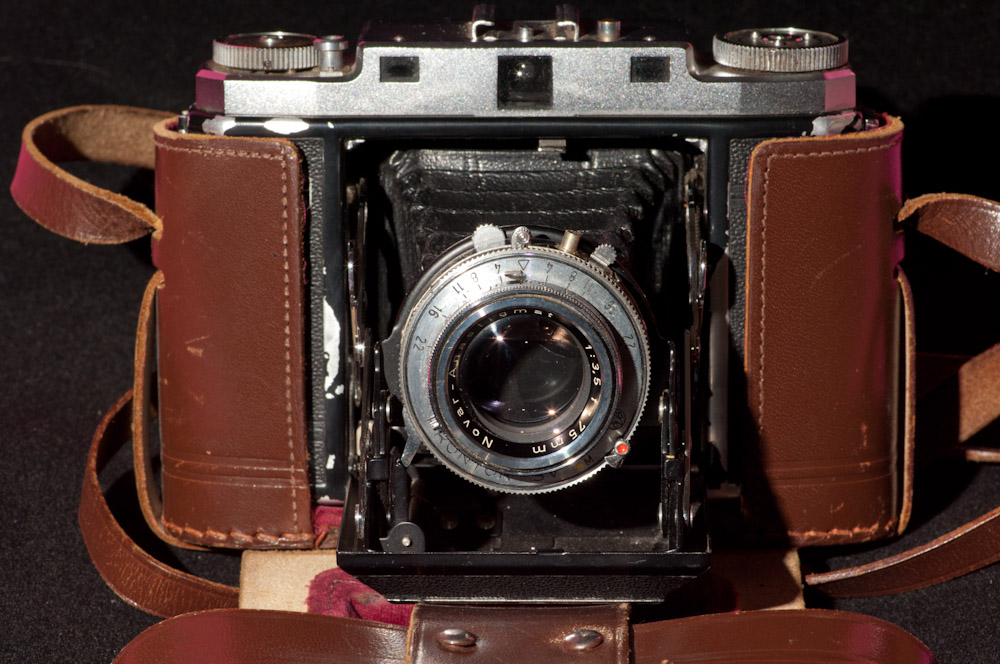
The Ikonta M creates a square negative on 120 film, yeilding 12 images per roll. Advancing the film requires viewing the frame number through the window on the back as is common for cameras of this age. The shutter itself resides with the lens at the end of the bellows but there is a shutter button on the body that releases it through a linkage. The shutter button is locked out until you advance the film, mostly preventing double exposures. Did I or didn’t I advance the film already?
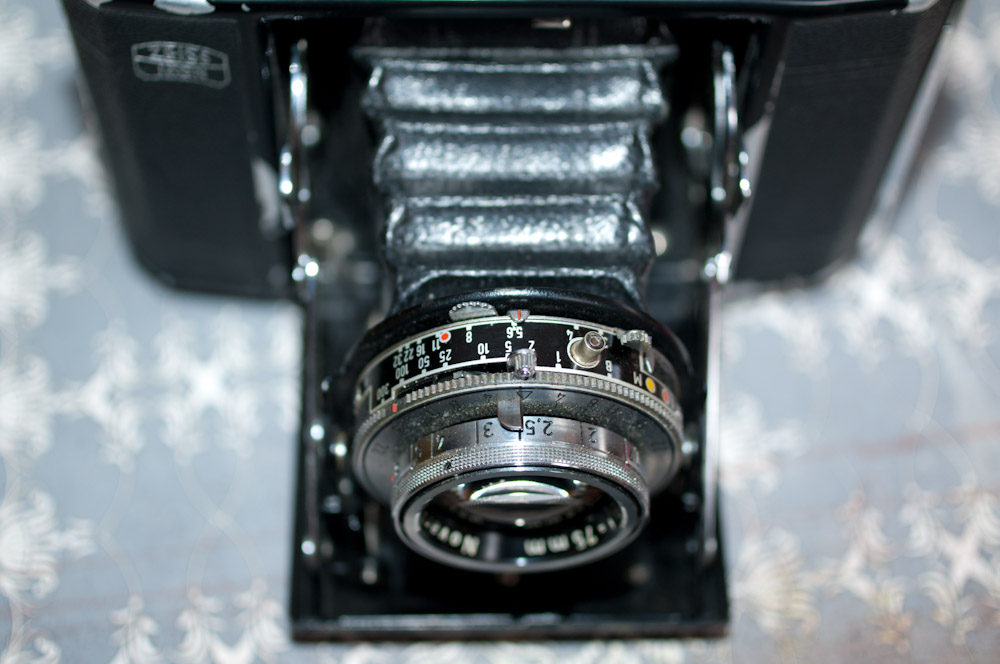
My favorite feature of this model though has to be it’s uncoupled rangefinder. By uncoupled I mean that it doesn’t actually change the focus, you have to remember to do that as well, but it indicates the distance on the rangefinder adjustment wheel.
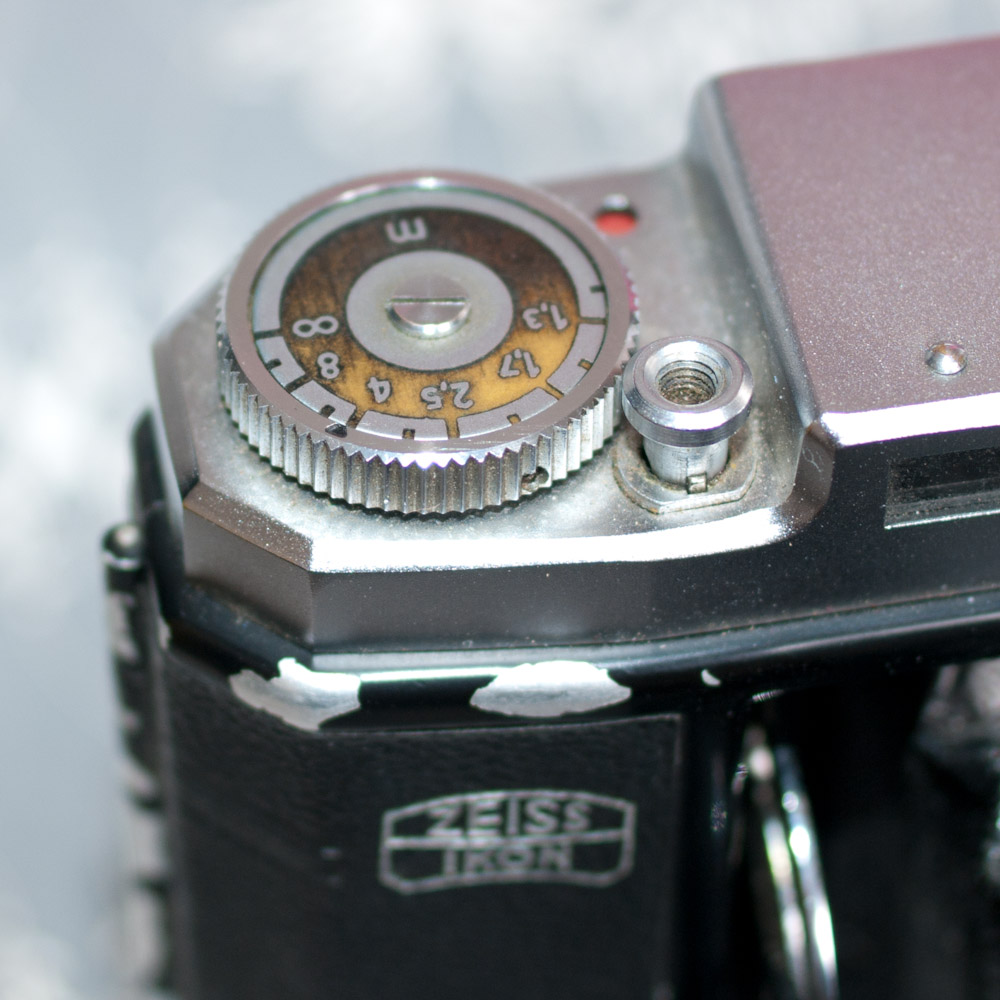
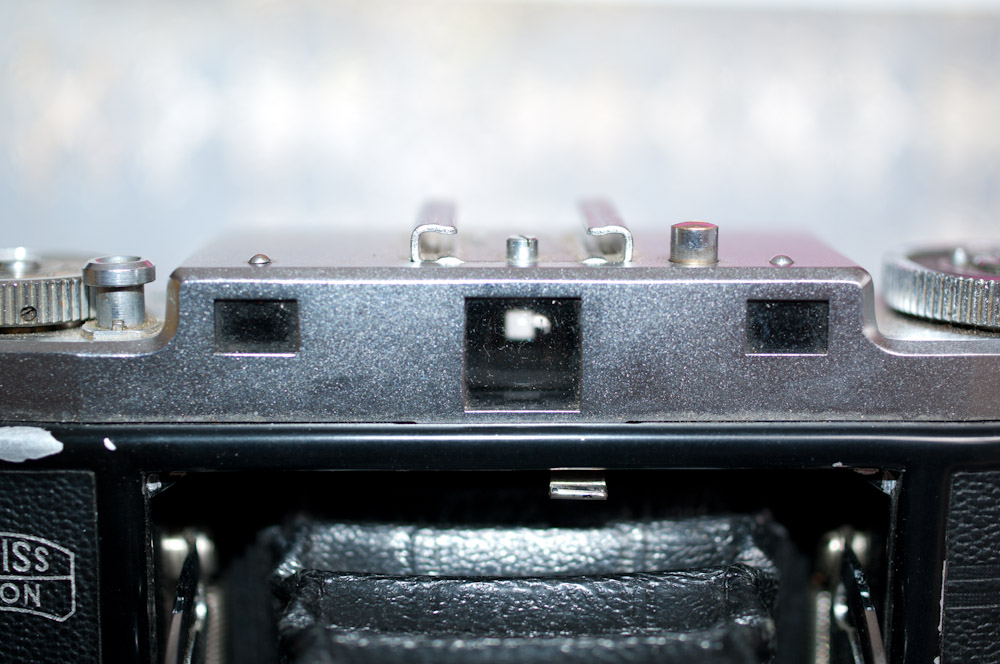
The rangefinder view is a magnification of the center allowing for more precise focusing, while framing is done in a seperate viewfinder. This is as combersome as it sounds; Find the distance with the rangefinder, transfer that distance to the lens, frame the image with the viewfinder, hey where did everyone go? These quirks though are what makes a camera like this interesting, if I just wanted pictures I would use a DSLR and be done with it.
3 comments | tags: camera, Zeiss | posted in Cameras, Photography
Feb
17
2012

There’s so much silk screening on this camera I can hardly determine what to call it. “Fuji DL-500 WIDE Panorama” “Fuji mini wide” It is however the DL-500. The most unique feature of this camera is that it has two focal lengths 28mm and 45mm, not something in between. This arrangement is made by swinging an additional lens element internally into the light path and repositioning the lens at the same time. A button on the top of the camera toggles between the two focal lengths. Additionally the viewfinder magnification changes to give an equivalent view for the selected focal length.
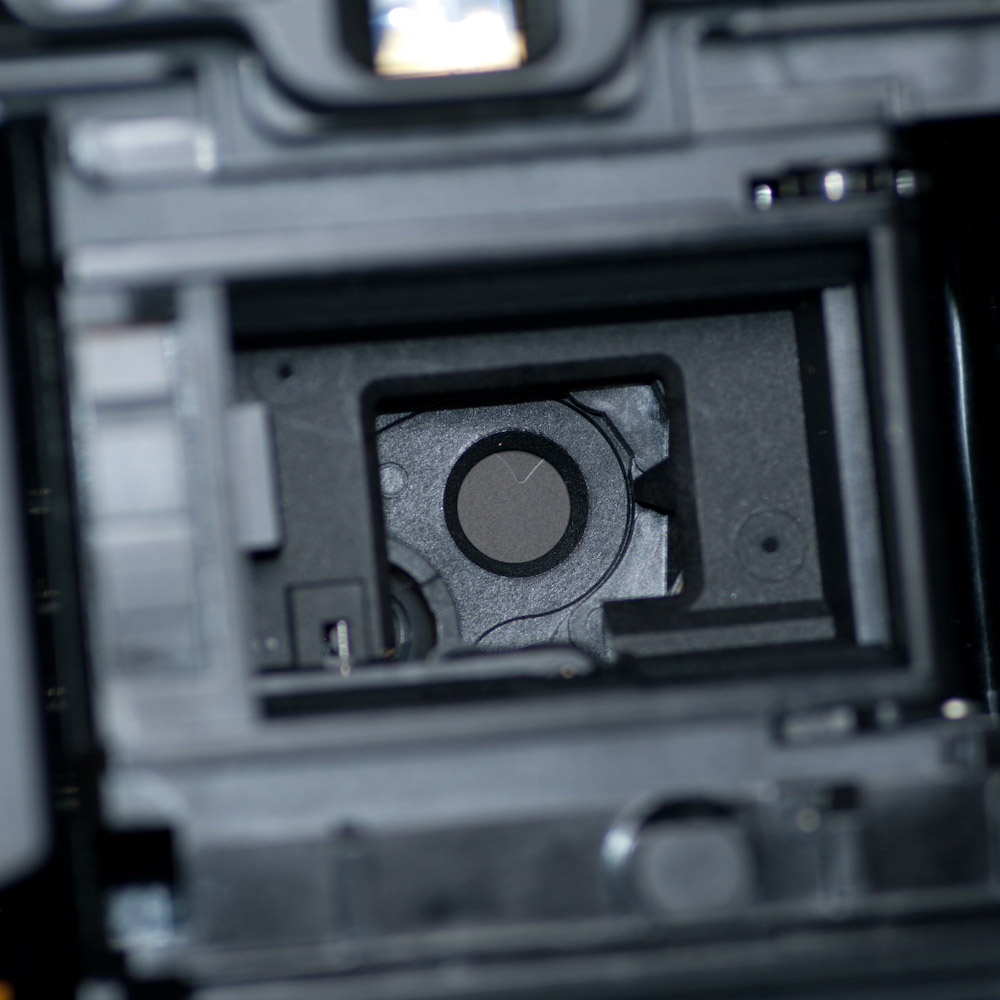
With the camera set to 28mm the secondary lens element can be seen hidden away in the bottom left corner just beneath the shutter.
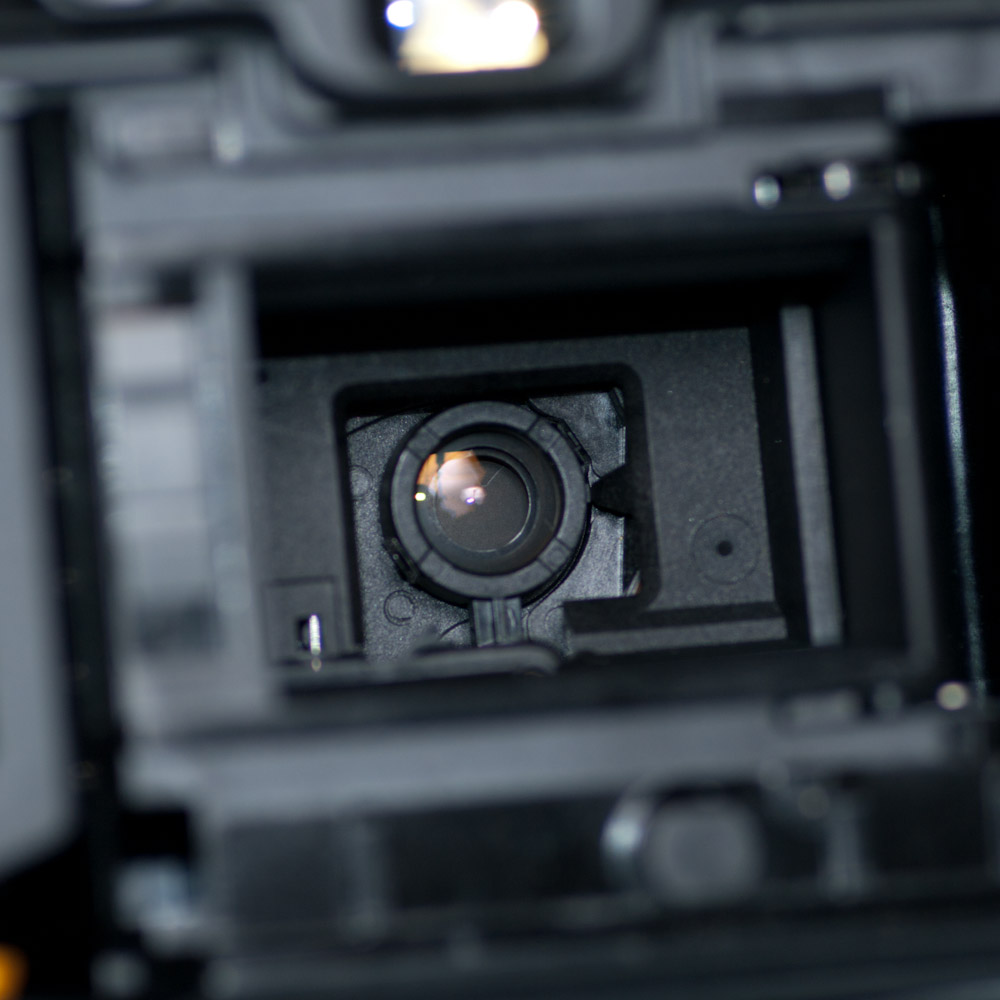 Here you can see the camera now set to 45mm with the additional lens element swung into place.
Here you can see the camera now set to 45mm with the additional lens element swung into place.
Samples of the two focal lengths.
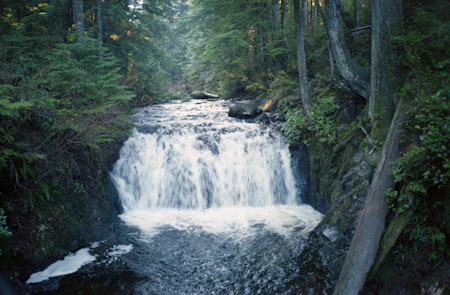


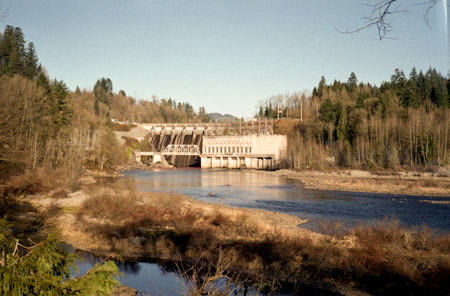
I was initially pretty excited by the prospect of this camera because of the wide 28mm focal length, there are very few 35mm film point and shoots that have lenses this wide. But the image quality of the lens in either focal length is not particularly good. The images are quite soft and there is a great amount of vignetting especially with the 28mm setting. That said though it is compact, light weight and 28mm.
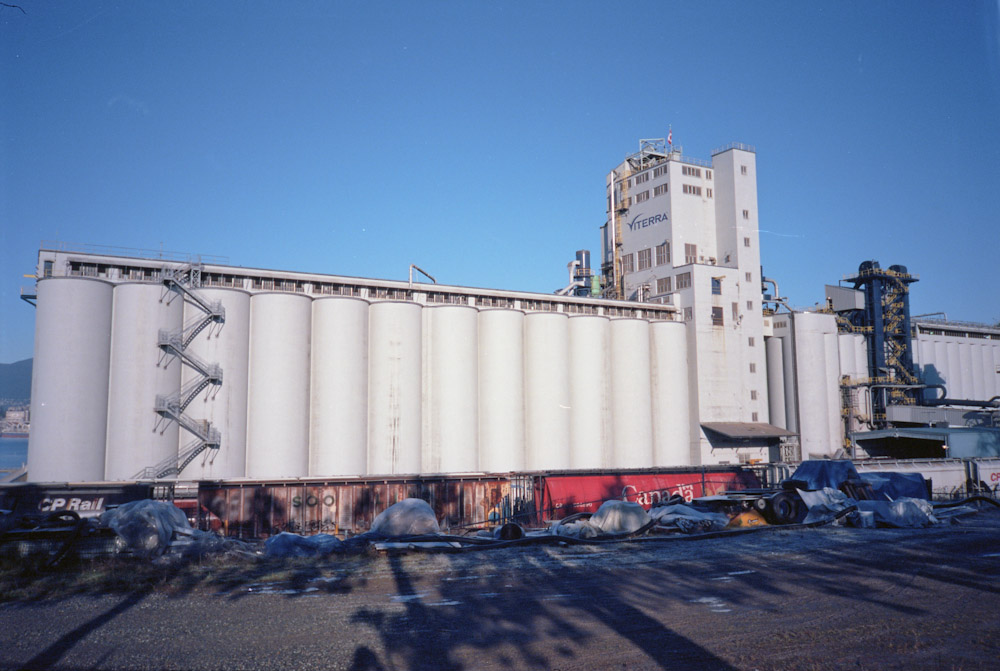
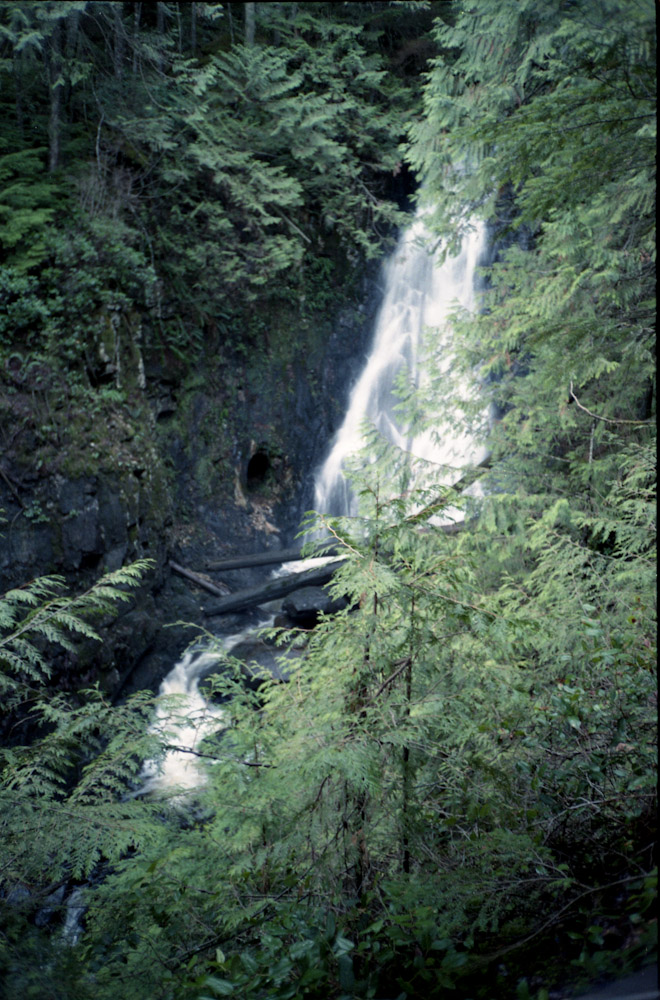
Two more quick notes about this camera. It requires two batteries to operate. A CR123A 3V lithium battery but also a CR2025 that is located inside the back of the camera. Both are required unlike some cameras that use the smaller battery just for date imprint functions. Also in order to set the mask for panorama images you need to open the back and make that change inside the camera, for obvious reasons you can only do this before you start shooting. I may give this camera another try in the future but if I do I will try closer distances and see if that makes a difference in the images, street photography perhaps.
3 comments | tags: camera, film, Fuji, Photography | posted in Cameras, Photography















